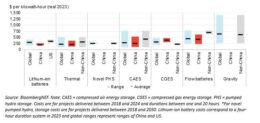Most home battery storage systems meet warranty claims, new research finds

While residential battery energy storage market has been growing in leaps and bounds in recent years, the development of standardized methods for quantifying capacity fade during field operation has been lagging behind.
With countries such as Germany seeing more than 70% of solar-plus-battery storage attachment rate in 2023, according to BloombergNEF data, the newly adopted EU Battery Regulation is calling for the development of reliable and transparent battery storage state of health (SOH) estimations for the purposes of “evaluating the residual value of the battery, facilitating the preparation for re-use, preparation for repurposing, repurposing or remanufacturing of the battery or for making the battery available to independent aggregators,” such as virtual power plants.
Aiming to address the shortage of public datasets in this field, researchers from the RWTH Aachen University in Germany have developed a scalable capacity estimation method, which was validated through regular field capacity tests.
The researchers conducted high-resolution field measurements for 21 privately operated lithium-ion systems in Germany over eight years. Their 146-gigabyte dataset covered three important lithium-ion battery technologies: lithium iron phosphate (LFP), nickel manganese cobalt (NMC) and a blend of lithium manganese oxide (LMO) and NMC.
With innovation in the battery storage space happening at a fast pace, Jan Figgener, visiting scientist at RWTH Aachen University and senior battery expert at ACCURE Battery Intelligence, explains the relevance of the reserch findings for today’s market.
“The stationary market shifted to LFP batteries, which are included in the study’s sample size and did not change in their fundamental characteristics. Our LFP sample still corresponds roughly to the average energy capacities in today’s market, while power values and system voltage increased. Battery aging is highly cell specific and no overall findings can be drawn for new products. However, considering that this was the first product generation, it is a good sign for the industry,” Figgener tells ESS News.
While a battery management system is tasked with keeping an eye on the state of charge (SOC) and SOH, it cannot provide a broader picture and reliable data on capacity fade.
“The BMS is responsible for short-term tasks such as keeping the system in defined ranges of voltage, current, and temperature. However, its computational capabilities are rather limited, often leading to inaccurate SOC and SOH estimates. In contrast, our method uses historical data timeseries and calculates the SOH in the cloud with much more computational resources. Thus, cloud diagnostics add an additional analytics layer to the BMS,” Figgener says.
Using their newly developed algorithm, the researchers found that the analyzed storage systems showed average decreases in usable capacity of around two to three percentage points per year.
The researchers have observed single systems with a higher capacity fade, which reached their end of life after five–to-seven years, defined as 80% of their nominal capacity. Others still showed reasonable SOH values after the same operational period, indicating a longer lifetime.
“Nevertheless, the given warranty periods can be reached in most cases by including ageing reserves. Considering that the measured HSSs [home storage systems] were from the first product generation, this is a positive sign for the industry,” the researchers write in their paper “Multi-year field measurements of home storage systems and their use in capacity estimation,” published in Nature Energy.














